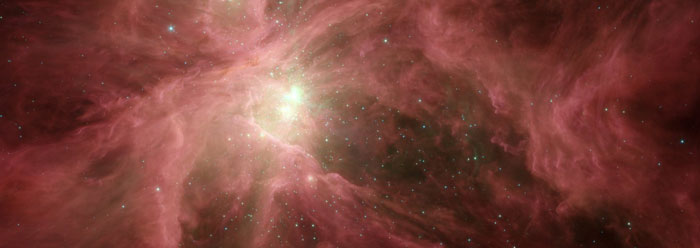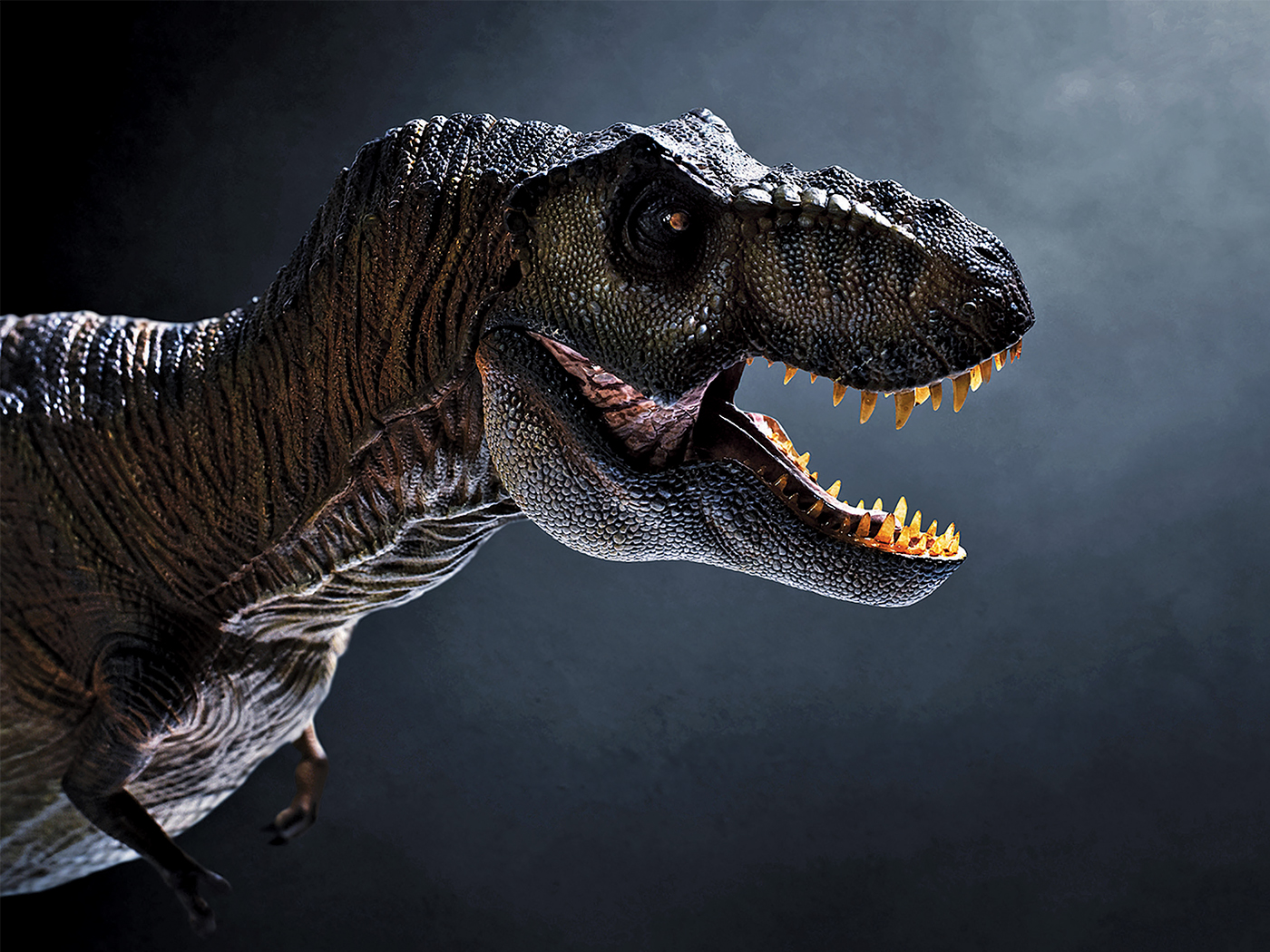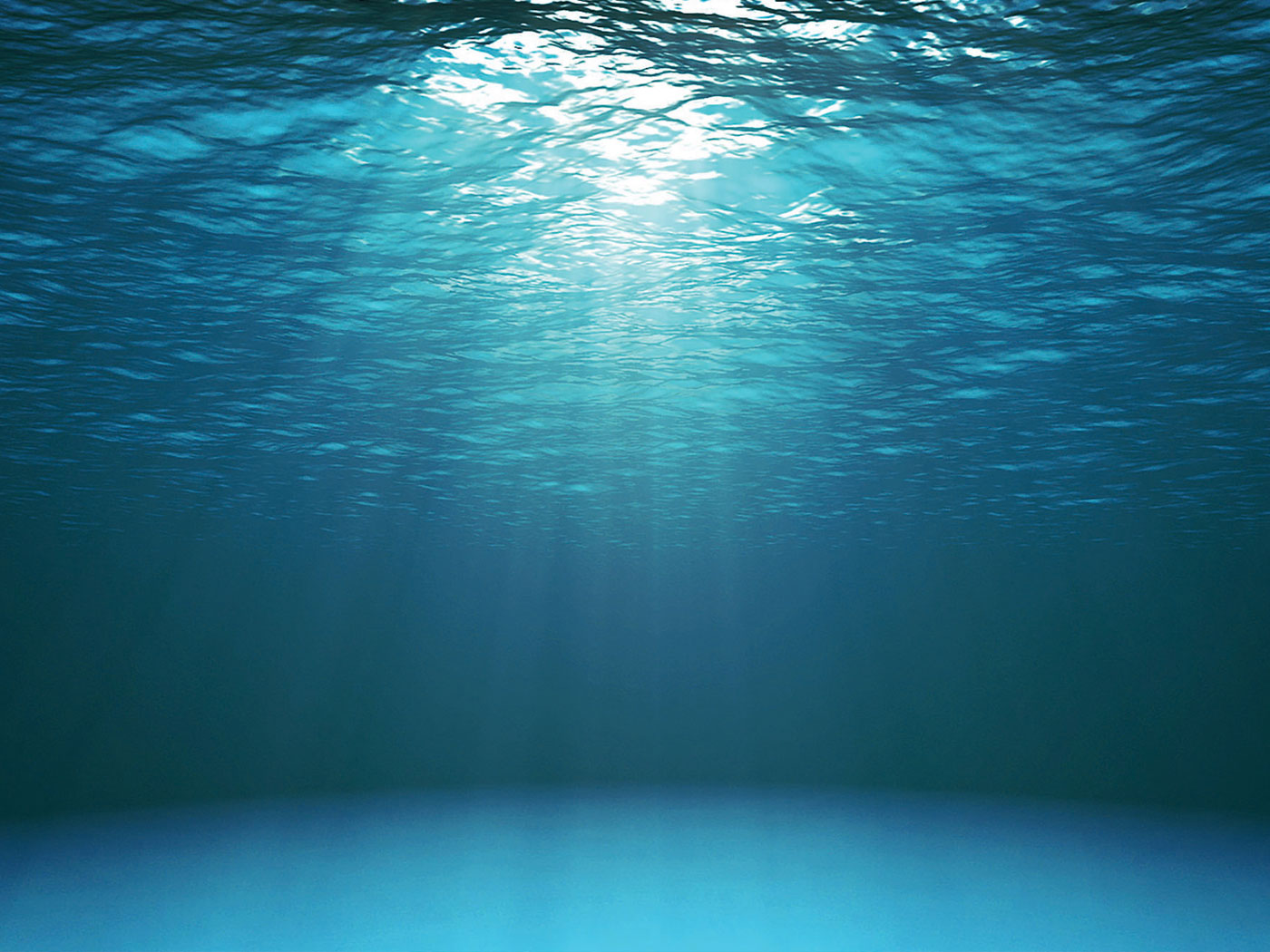The most devastating and conclusive argument against evolution is the entropy principle. This principle (also known as the Second Law of Thermodynamics) implies that, in the present order of things, evolution in the "vertical" sense (that is, from one degree of order and complexity to a higher degree of order and complexity) is completely impossible.
The evolutionary model of origins and development requires some universal principle which increases order, causing random particles eventually to organize themselves into complex chemicals, non-living systems to become living cells, and populations of worms to evolve into human societies. However the only naturalistic scientific principle which is known to effect real changes in order is the Second Law, which describes a situation of universally deteriorating order.
"This law states that all natural processes generate entropy, a measure of disorder"1
"Entropy, in short, is the measurement of molecular disorder. The law of the irreversible increase in entropy is a law of progressive disorganization, of the complete disappearance of the initial conditions."2
It can hardly be questioned that evolution is at least superficially contradicted by entropy. The obvious prediction from the evolution model of a universal principle that increases order is confronted by the scientific fact of a universal principle that decreases order. Nevertheless evolutionists retain faith that, somehow, evolution and entropy can co-exist, even though they don’t know how.
"In the complex course of its evolution, life exhibits a remarkable contrast to the tendency expressed in the Second Law of Thermodynamics. Where the Second Law expresses an irreversible progression toward increased entropy and disorder, life evolves continually higher levels of order. The still more remarkable fact is that this evolutionary drive to greater and greater order also is irreversible. Evolution does not go backward."3
"Back of the spontaneous generation of life under other conditions than now obtain upon this planet, there occurred a spontaneous generation of elements of the kind that still goes on in the stars; and back of that I suppose a spontaneous generation of elementary particles under circumstances still to be fathomed, that ended in giving them the properties that alone make possible the universe we know."4
"Life might be described as an unexpected force that somehow organizes inanimate matter into a living system that perceives, reacts to, and evolves to cope with changes to the physical environment that threatens to destroy its organization."5
When confronted directly with this problem (e.g., in creation/evolution debates), evolutionists often will completely ignore it. Some will honestly admit they do not know how to resolve the problem but will simply express confidence that there must be a way, since otherwise one would have to believe in supernatural creation. As Wald says:
"In this strange paper I have ventured to suggest that natural selection of a sort has extended even beyond the elements, to determine the properties of protons and electrons. Curious as that seems, it is a possibility worth weighing against the only alternative I can imagine, Eddington's suggestion that God is a mathematical physicist."6
Some evolutionists try to solve the problem by suggesting that the entropy law is only statistical and that exceptions can occur, which would allow occasional accidental increases in order. Whether this is so, however, is entirely a matter of faith. No one has ever seen such an exception, and science is based upon observation!
"There is thus no justification for the view, often glibly repeated, that the Second Law of Thermodynamics is only statistically true, in the sense that microscopic violations repeatedly occur, but never violations of any serious magnitude. On the contrary, no evidence has ever been presented that the Second Law breaks down under any circumstances."7
By far the majority of evolutionists, however, attempt to deal with this Second Law argument by retreating to the "open system" refuge. They maintain that, since the Second Law applies only to isolated systems (from which external sources of information and order are excluded), the argument is irrelevant. The earth and its biosphere are open systems, with an ample supply of energy coming in from the sun to do the work of building up the complexity of these systems. Furthermore, they cite specific examples of systems in which the order increases, (such as the growth of a crystal out of solution, the growth of a seed or embryo into an adult plant or animal, or the growth of a small Stone Age population into a large complex technological culture) as proof that the Second Law does not inhibit the growth of more highly-ordered systems.
Arguments and examples such as these, however, are specious arguments. It is like arguing that, since NASA was able to put men on the moon, therefore it is reasonable to believe cows can jump over the moon! Creationists have for over a decade been emphasizing that the Second Law really applies only to open systems, since there is no such thing as a truly isolated system. The great French scientist and mathematician, Emil Borel, has proved this fact mathematically, as acknowledged by Layzer:
"Borel showed that no finite physical system can be considered closed."8
Creationists have long acknowledged (in fact emphasized) that order can and does increase in certain special types of open systems, but this is no proof that order increases in every open system! The statement that "the earth is an open system" is a vacuous statement containing no specific information, since all systems are open systems.
The Second Law of Thermodynamics could well be stated as follows: "In any ordered system, open or closed, there exists a tendency for that system to decay to a state of disorder, which tendency can only be suspended or reversed by an external source of ordering energy directed by an informational program and transformed through an ingestion-storage-converter mechanism into the specific work required to build up the complex structure of that system."
If either the information program or the converter mechanism is not available to that "open" system, it will not increase in order, no matter how much external energy surrounds it. The system will proceed to decay in accordance with the Second Law of Thermodynamics.
| CRITERIA | S Y S T E M | |
| GROWING PLANT | BUILDING CONSTRUCTION | |
| 1. Open System 2. Available Energy 3. Directing Program 4. Conversion Mechanism |
Seed Sun Genetic Code Photosynthesis |
Materials Sun Blueprint Workmen |
To cite special cases (such as the seed, for which the genetic code and the conversion mechanism of photosynthesis are available) is futile, as far as "evolution" is concerned, since there is neither a directing program nor a conversion apparatus available to produce an imaginary evolutionary growth in complexity of the earth and its biosphere.
It is even more futile to refer to inorganic processes such as crystallization as evidence of evolution. Even Prigogine recognizes this:
"The point is that in a non-isolated system there exists a possibility for formation of ordered, low-entropy structures at sufficiently low temperatures. This ordering principle is responsible for the appearance of ordered structures such as crystals as well as for the phenomena of phase transitions. Unfortunately this principle cannot explain the formation of biological structures. The probability that at ordinary temperatures a macroscopic number of molecules is assembled to give rise to the highly-ordered structures and to the coordinated functions characterizing living organisms is vanishingly small. The idea of spontaneous genesis of life in its present form is therefore highly improbable, even on the scale of the billions of years during which prebiotic evolution occurred."9
Thus the highly specialized conditions that enable crystals to form and plants and animals to grow have nothing whatever to do with evolution. These special conditions themselves (that is, the marvelous process of photosynthesis, the complex information programs in the living cell, even the electrochemical properties of the molecules in the crystal, etc.) could never arise by chance — their own complexity could never have been produced within the constraints imposed by the Second Law. But without these, the crystal would not form, and the seed would never grow.
But what is the information code that tells primeval random particles how to organize themselves into stars and planets, and what is the conversion mechanism that transforms amoebas into men? These are questions that are not answered by a specious reference to the earth as an open system! And until they are answered, the Second Law makes evolution appear quite impossible.
To their credit, there are a few evolutionists (though apparently very few) who recognize the critical nature of this problem and are trying to solve it. Prigogine has proposed an involved theory of "order through fluctuations" and "dissipative structures."10
But his examples are from inorganic systems and he acknowledges that there is a long way to go to explain how these become living systems by his theory.
"But let us have no illusions, our research would still leave us quite unable to grasp the extreme complexity of the simplest of organisms."11
Another recent writer who has partially recognized the seriousness of this problem is Charles J. Smith.
"The thermodynamicist immediately clarifies the latter question by pointing out that the Second Law classically refers to isolated systems which exchange neither energy nor matter with the environment; biological systems are open and exchange both energy and matter. This explanation, however, is not completely satisfying, because it still leaves open the problem of how or why the ordering process has arisen (an apparent lowering of the entropy), and a number of scientists have wrestled with this issue. Bertalanffy (1968) called the relation between irreversible thermodynamics and information theory one of the most fundamental unsolved problems in biology. I would go further and include the problem of meaning and value."12
| CRITERIA TO BE SATISFIED |
S Y S T E M | |
| FIRST LIVING MOLECULE | POPULATION OF COMPLEX ORGANISMS | |
| 1. Open System 2. Available Energy 3. Directing Program 4. Conversion Mechanism |
Complex Inorganic Molecule Sun None None |
Population of Simple Organisms Sun None (Natural Selection?) None (Natural Selection?) |
Whether rank-and-file evolutionists know it or not, this problem they have with entropy is thus "one of the most fundamental unsolved problems in biology." It is more than a problem, in fact, it is a devastating denial of the evolution model itself. It will continue to be so until evolutionists can demonstrate that the vast imagined evolutionary continuum in space and time has both a program to guide it and an energy converter to empower it. Otherwise, the Second Law precludes it.
It is conceivable, though extremely unlikely that evolutionists may eventually formulate a plausible code and mechanism to explain how both entropy and evolution could co-exist. Even if they do, however, the evolution model will still not be as good as the creation model. At the most, such a suggestion would constitute a secondary modification of the basic evolution model. The latter could certainly never predict the Second Law.
The evolution model cannot yet even explain the Second Law, but the creation model predicts it! The creationist is not embarrassed or perplexed by entropy, since it is exactly what he expects. The creation model postulates a perfect creation of all things completed during the period of special creation in the beginning. From this model, the creationist naturally predicts limited horizontal changes within the created entities (e.g., variations within biologic kinds, enabling them to adapt to environmental changes). If "vertical" changes occur, however, from one level of order to another, they would have to go in the downward direction, toward lower order. The Creator, both omniscient and omnipotent, made all things perfect in the beginning. No process of evolutionary change could improve them, but deteriorative changes could disorder them.
Not only does the creation model predict the entropy principle, but the entropy principle directly points to creation. That is, if all things are now running down to disorder, they must originally have been in a state of high order. Since there is no naturalistic process which could produce such an initial condition, its cause must have been supernatural. The only adequate cause of the initial order and complexity of the universe must have been an omniscient Programmer, and the cause of its boundless power an omnipotent Energizer. The Second Law of Thermodynamics, with its principle of increasing entropy, both repudiates the evolution model and strongly confirms the creation model.
REFERENCES
l David Layzer, "The Arrow of Time," Scientific American (Vol. 223, December 1975), p. 56. Dr. Layzer is Professor of Astronomy at Harvard.
2 Ilya Prigogine, "Can Thermodynamics Explain Biological Order?" Impact of Science on Society, Vol. XXIII, No. 3., 1973) p. 162. Dr. Prigogine is Professor in the Faculty of Sciences at the University Libre de Belgique and is one of the world's leading thermodynamicists.
3 J.H. Rush, The Dawn of Life (New York, Signet 1962) p. 35.
4 George Wald, "Fitness in the Universe," Origins of Life (Vol. 5, 1974) p. 26.
5 Mars and Earth, National Aeronautics and Space Administration (Washington, U.S. Govt. Printing Office, NF-61, August 1975) p.5.
6 George Wald, op cit., p. 26. Wald is a famous humanistic biologist at Harvard.
7 A.B. Pippard, Elements of Chemical Thermodynamics for Advanced Students of Physics (Cambridge, England, Cambridge University Press, 1966), p. 100. Pippard was Professor of Physics at Cambridge.
8 Layzer, op cit., p. 65.
9 Ilya Prigogine, Gregoire Nicolis & Agnes Babloyants, "Thermodynamics of Evolution," Physics Today, (Vol. 25, November 1972) p. 23.
10Ibid, pp. 23-28.
11 Ilya Prigogine, "Can Thermodynamics Explain Biological Order?" p. 178.
12 Charles J. Smith, "Problems with Entropy in Biology," Biosystems (Vol. 1, 1975), p. 259.*Dr. Morris is Founder and President Emeritus of ICR.






















